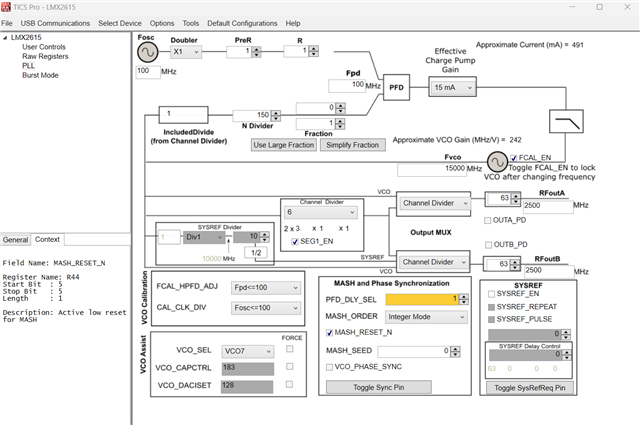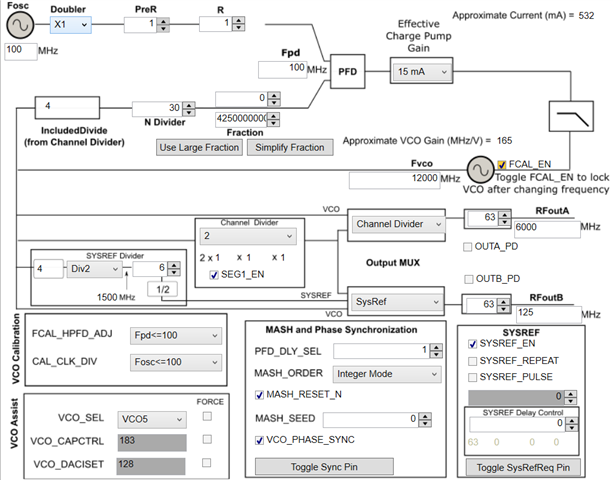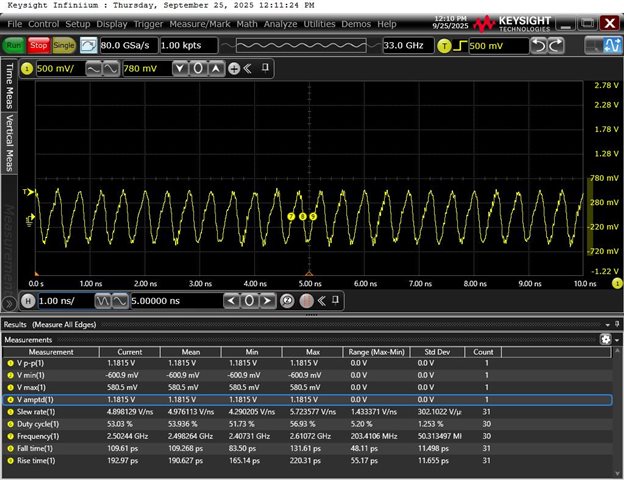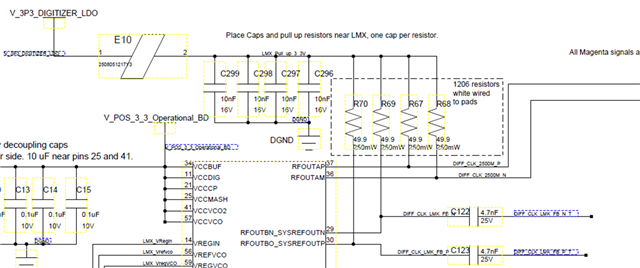Other Parts Discussed in Thread: LMK04832
Tool/software:
Hi!
I was able to get an estimate of the current draw of our configuration, but I need some help understanding how to estimate a maximum power rating to show we are not overstressing the part.
So with our configuration and a Vs max of 3.38V we calculate 3.38V*.491A = 1.6W.
So I was wondering if our ambient temperature is max 55C, could I use PDmax=(TJmax−TA)/θJA -> PDmax=(125°C−55°C)/22.7°C/W = 3.08W as an upper limit as to what the part can handle?
I tried doing various settings to find a max current draw, but that doesn't seem like a good way to find a upper limit to the power draw that we can compare against.
For reference we have a .75 derate on our power rating, so if we assume 3.6Vs and 500mA current draw = 1.8W, then after the derate that only allows us 1.3W of power. I feel the actual part can handle more, but Im not sure if the junction temperature is a good way to get a max upper limit or if there are other factors to consider.












